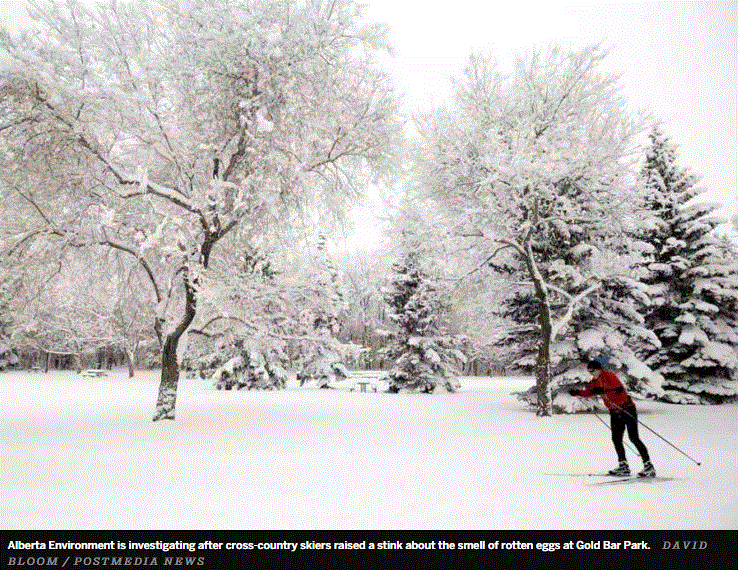Increasingly, scientific research is revealing that even low concentrations of hydrogen sulfide (in the low parts per million or even the parts per billion range) can affect human health, especially when exposure occurs over an extended period of time. Some findings include:
A study of hydrogen sulfide in the workplace found that workers complained of eye pain at a level of 6.4 ppm.
Clinical studies suggest that short-term exposure to hydrogen sulfide at concentrations of 2 ppm may induce bronchial obstruction. In a study investigating the effects of hydrogen sulfide on asthmatics, two out of ten subjects exhibited a pronounced response when exposed to 2 ppm hydrogen sulfide. Airway resistance and conductivity were affected by more than 30%, suggesting significant bronchial obstruction.
Former workers and residents living downwind of a crude oil processing plant had neurophysiological abnormalities. Residents in this study were exposed to hydrogen sulfide at 10 ppb, although concentrations occasionally reached 100 ppb.
Residents near pulp and paper mills in Finland have reported an excess of health symptoms compared to residents living in a community without any industrial hydrogen sulfide sources. The annual mean concentrations of hydrogen sulfide in the affected community was 8 µg/m3 (5.7 ppb). Symptoms included respiratory, eye and nasal problems). Residents in the pulp and paper community were also exposed to other sulfur compounds, but hydrogen sulfide accounted for more than two-thirds of the sulfur compounds monitored in the community.
Symptoms of adverse health effects experienced by residents in Odessa, TX and Puna, Hawaii, two communities with industrial sources of hydrogen sulfide were compared to the same symptoms in three communities without industrial sources of hydrogen sulfide. The residents in Odessa were exposed to hydrogen sulfide concentrations of 7-27 ppb (annual average), with maximum 8-hour measurements between 335 and 503 ppb. Exposure in Puna is less clear, but some data from the 1990s indicate hourly averages in the low-ppb range, with most below 1 ppb. Between June 1996 and 1997, peak hydrogen sulfide concentrations was 301.7 ppb. In other years, releases of hydrogen sulfide between 200-500 ppb were reported. The two hydrogen sulfide-exposed communities were similar with respect to the adverse health effects (e.g., central nervous systems, ear/nose/throat, respiratory, muscle/bone, skin, immune, cardiovascular, digestive, teeth/gums, urinary, blood) reported by residents. Percentages of affected residents in the hydrogen sulfide-exposed communities were statistically different (higher) than the non-exposed communities.
‘It stinks at Gold Bar’: Alberta Environment tests find above average levels of toxic gas by Otiena Ellwand, January 29, 2016, Edmonton Journal
Alberta Environment is investigating after cross-country skiers raised a stink about the smell of rotten eggs at Gold Bar Park.
Alberta Environment has tested higher than normal concentrations of hydrogen sulphide — responsible for that rotten egg smell — at Gold Bar Park.
It has referred the matter to the department’s compliance branch.
The agency’s portable air monitoring laboratory was stationed inside the park on Gold Bar Park Road, just off 50th Street, from Feb. 6 to April 29, 2015, to test levels of nitrogen dioxide, ozone, particulate matter, sulphur dioxide, hydrogen sulphide and carbon monoxide, after the Edmonton Nordic Ski Club expressed concerns about poor air quality in the area.
Of the compounds tested, only hydrogen sulphide, a colourless, flammable, hazardous gas, exceeded the province’s air quality objectives.
It was found to be greater than the province’s hourly guidelines of 10 parts-per-billion with the maximum hourly average concentration measuring 26 ppb. This occurred 25 times during the three-month testing period.
Concentrations of the toxic gas also exceeded the 24-hour guidelines, concentrations greater than three parts-per-billion, in four instances.
The gas was most predominant in the northwest portion of the park near the entrance to Epcor’s Gold Bar Wastewater Treatment Plant, the Alberta Environment report says. The above-average levels mostly occurred at night, when winds were low, it said.

The Edmonton Nordic Ski Club conducted its own tests in 2014 and also found that on eight occasions hydrogen sulphide exceeded Alberta’s guidelines.
“Basically, it confirms what we found, that it stinks at Gold Bar, that’s the bottom line,” said Dave Bennett, the club’s past president, who conducted the tests.
“That’s the reason we need to get this information out, so people can make informed decisions.”
The gas is localized along a 500-metre stretch of the 50th Street trail, as it’s called, parallel to the Gold Bar access road, he said.
The health impacts depend on how high the concentration is and how long a person is exposed to it, said Bennet, a neuroscience professor at the University of Alberta.
“Hydrogen sulphide will kill you at a high enough concentration. … These levels are not at that level, but the issue is long-term health,” he said.
Low concentrations may irritate the eyes, nose, throat and respiratory system. Asthmatics may experience breathing difficulties, the U.S. Department of Labor says.
If skiers smell sulphide, they should not spend prolonged periods in the area, especially children, Bennet said. [Hold your breath, as you ski, walk or run out and pray for your brain cells.]

Alberta Environment said in its report that the matter has now been referred to the department’s compliance branch for more investigation. Alberta Environment, Alberta Health Services and the city met with Epcor to discuss the findings and develop ways to deal with odour control, it said.
Anyone who smells the odour should call the 24-hour Alberta Environmental Hotline at 1-800-222-6514 as soon as possible. The city also records odour complaints through 311. Information such as the time, location, intensity, duration and description of the odour are valuable, the report said. [Emphasis added]
